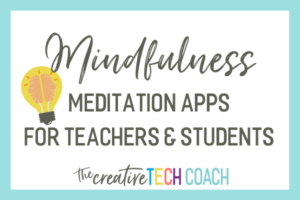Because today’s young children are so thoroughly exposed to technology, it is reasonable to consider integrating technology into the early childhood classroom. Fortunately, many experts concur that technology in the classroom can prove beneficial to the early childhood student. Clements and Samara (cited in Hertzog & Klein, 2005) insist that computers have a positive effect on young students’ social and emotional development and can be an instrument in their cognitive development, as well.
Currently I teach second grade at a primary school, and any instructional approach that I use in my early childhood classroom needs to be aligned with current research on child development and how students learn. Keengwe and Onchwari (2009) stress that technology-enhanced instruction must be based on developmentally appropriate practices. Therefore, when integrating technology into the early childhood classroom, educators must take care to ensure that the tasks are “developmentally appropriate” (Keengwee & Onchwari, 2009).
I agree with Keengwee and Onchwari (2009) that a constructivist approach best supports integrating technology in the primary-level classroom. Smeets (cited in Keengwee & Onchwari, 2009) lists some of the constructivist practices of technology integration: “embed authenticity,” “emphasize knowledge construction,” “use open-ended learning,” and “student cooperation and collaboration” (p. 211). Keengwee and Onchwari (2009) contend that best practices for using technology in the early childhood classroom means that technology is a tool to support instruction.
Many of the developmentally appropriate applications for using technology in the primary-level classroom support instruction and constructivist approaches. A modified flipped classroom model promotes student-center learning and collaboration, which are important when technology is integrated in the primary school classroom (Bull, Ferster, & Kjellstrom, 2012). Tablets are an effective tool for young students to use to represent ideas, and mobile learning promotes collaboration and engagement, which are both important components of today’s primary classroom (Cause and Chen, 2010; Liu et al., 2014). Larkin’s (2012) findings suggest that a 2:1 ratio of students to device, as opposed to a 1:1 ration, increases collaboration and student engagement in the primary classroom. Moreover, Schunk (cited in Hertzog & Klein, 2005) suggests that when implemented successfully, technology constructs “an active interaction between learner and content” (para. 8). Allof these developmentally appropriate practices are ones that I currently use in my primary-level classroom.
References
Bull, G., Ferster, B., & Kjellstrom, W. (2012). Inventing the flipped classroom. Learning &
Leading with Technology, 40(1), 10-11. Retrieved from: http://www.iste.org.ezproxy. liberty.edu:2048/learn/publications/learning-leading
Cause, L. J., & Chen, D. W. (2010). A tablet computer for young children? Exploring its
viability for early childhood education. Journal of Research on Technology in Education, 43(1). 75-98. Retrieved from: http://p2048-www.liberty.edu.ezproxy.liberty.edu:2048/ login?url=http://search.proquest.com.ezproxy.liberty.edu:2048/docview/750120203?accountid=12085
Hertzog, N., & Klein, M. (2005). Beyond gaming: A technology explosion in early childhood
classrooms. Gifted Child Today, 28(3), 24-32. Retrieved from
http://go.galegroup.com.ezproxy.liberty.edu:2048/ps/i.do?id=GALE%7CA134862456&v=2.1&u=vic_liberty&it=r&p=AONE&sw=w&asid=0f3b135110a176cbb25a3dc17223cd83
Keengwee, J., & Onchwari, G. (2009). Technology and early childhood education: A technology
integration professional development model for practicing teachers. Early Childhood Education Journal 37(3), 209-218. doi:http://dx.doi.org/10.1007/s10643-009-0341-0
Larkin, K. (2012). You use! I use! we use! Questioning the orthodoxy of one-to-one computing
in primary schools. Journal of Research on Technology in Education, 44(2), 101-120. Retrieved from http://search.proquest.com/docview/910699512?accountid=12085
Liu, M., Scordino, R., Geurtz, R., Navarrete, C., Ko, Y. & Lim, M. (2014). A look at research on
mobile learning in k–12 education from 2007 to the present. Journal of Research on Technology in Education. 46(4), 325-372. Retrieved from: http://p2048-www.liberty.edu.ezproxy.liberty.edu:2048/login?url=http://search.proquest.com.ezproxy.liberty.edu:2048/docview/1634011132?accountid=12085




2 Responses
Ashley,
Great post! I think that you made a really important note that when incorporating technology into your class it must be developmentally appropriate. This is important for all teachers and for students in all subject areas. I feel if you are using a program in your classroom that is not appropriate for the age or developmental level it may cause the student to become inattentive and may not be beneficial to the student. I have seen students use programs in their classrooms that were assigned by their teachers that were not appropriate for the student. I had students who were on a 1st and 2nd grade reading level required to use and complete lessons during their English class that were appropriate for a students on 7th grade reading level. This caused my students to become disengaged, frustrated, and embarrassed. You brought up some really great points that are important to consider when implementing technology.
-Kristin Heckman
Thanks for your reply, Kristin! I enjoyed your comments!